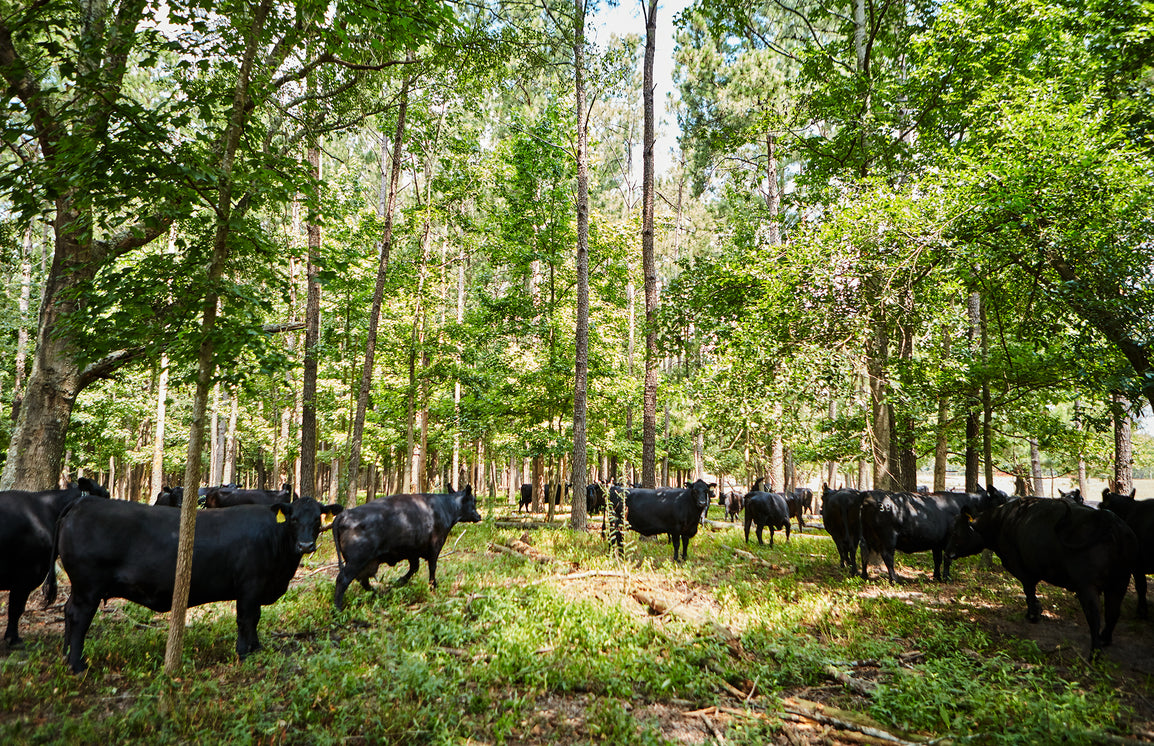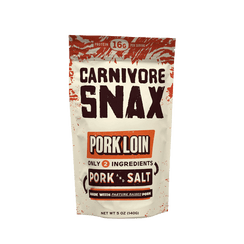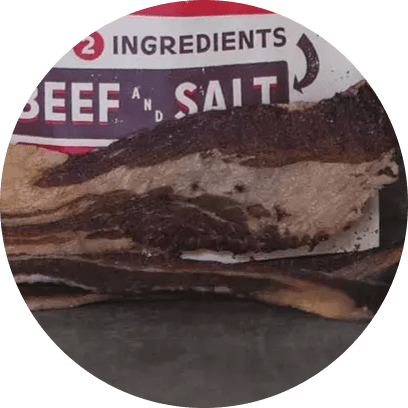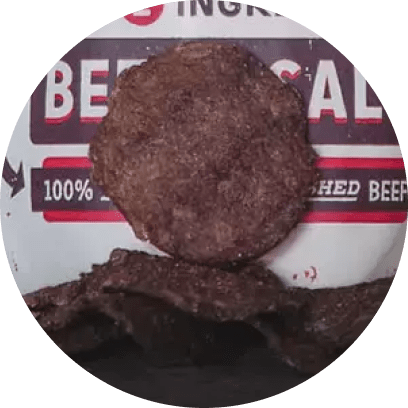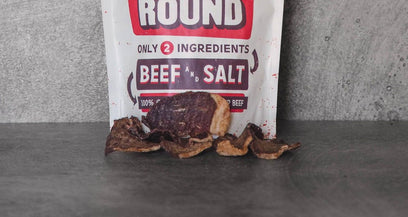THE CARNIVORE DIET BENEFITS




As it becomes more and more evident that our farming systems should seek to not just preserve our lands - but increase their potential - two distinct terms have taken center stage: regenerative agriculture vs sustainable agriculture.
Some believe these concepts are interchangeable, as both champion an environmentally friendly approach to farming. But a closer look reveals key differences that could have profound implications for the future of farming.
Sustainable agriculture has long been the watchword of environmentally conscious farming. Its goal is to conserve resources, reduce environmental impacts, and maintain the productivity of farmlands for generations to come. It's a pledge to preserve what we have, to do no harm.
Enter regenerative agriculture - a farming philosophy that promises to do more than just sustain. It aims to improve, to restore, to regenerate. This approach doesn't just aim to maintain the status quo - it seeks to enhance it, creating more fertile soils, more robust ecosystems, and more prosperous farms.
While both systems embody a favorable shift from conventional, industrial farming, the implications of their differences are far-reaching. Their impacts on the earth, on the farmer, and on the consumer are substantial.
So, we’ll shine a light on these differences today, helping you understand the benefits and drawbacks of each approach, and why one might have the edge over the other. Let’s dive right into the differences between regenerative vs sustainable agriculture.
What’s the Difference Between Regenerative Agriculture vs Sustainable Agriculture?
Just as with our comparison between regenerative agriculture vs permaculture, we want to start by helping you fully understand the interworkings of each system. Only then can you start to get a sense of which is superior.
First, though, we want to start by saying that both regenerative vs sustainable agriculture aim to tackle the environmental issues associated with conventional farming. However, the way each system goes about achieving this goal differs significantly. As a result, the outcomes vary greatly.
So, what are the key differences between regenerative agriculture vs sustainable agriculture? Let’s start by breaking down the system we feel is more prosperous.
Principles & Practices of Regenerative Agriculture
So, what is regenerative farming exactly? This is a system of farming principles and practices that seeks to rehabilitate and enhance the entire ecosystem of the farm by restoring the soil's organic matter and improving its biodiversity.
It's more than just a collection of practices - it's a farming philosophy that drives constant innovation and improvement of agricultural systems. But - how does regenerative agriculture work? In terms of regenerative farming techniques, all methods seek to achieve common goals:
- Soil Health: The primary goal is to improve soil fertility, which is achieved by reducing tillage, using cover crops, and practicing crop rotation. These practices increase organic matter in the soil, leading to improved soil structure and water retention.
- Biodiversity: A regenerative farm promotes a diverse ecosystem. This includes different types of crops, as well as beneficial insects, birds, and other animals that contribute to the overall health of the farm.
- Carbon Sequestration: By enhancing soil health and promoting plant growth, regenerative agriculture aims to capture more carbon dioxide from the atmosphere, helping to preserve our lands. This is a big one, as it’s something sustainable agriculture fails to do. Learn more in our guide to how regenerative agriculture sequesters carbon.
- Water Management: Healthy soil can absorb and retain more water, reducing the need for irrigation and making the farm more resilient to drought.
We have a deep database of resources on this subject - including why regenerative agriculture is important, regenerative cattle farming, and more. For now, though, let’s unpack the other side of the coin: sustainable agriculture.
Principles & Practices of Sustainable Agriculture
Sustainable agriculture, on the other hand, aims to meet society's food and textile needs in the present without compromising the ability of future generations to meet their own needs.
The focus here is on long-term sustainability and conservation of resources. As we briefly touched on at the start of this conversation, that’s a big difference: one maintains resources, and the other creates new resources. We’ll expand on this below. But first, let’s take a look at what goes into a sustainable farming system:
- Resource Conservation: Sustainable farmers aim to minimize the use of non-renewable resources and on-farm resources. This includes reducing the use of synthetic fertilizers and pesticides, conserving water, and maintaining healthy soils.
- Environmental Stewardship: Sustainable farming practices are designed to protect the lands and reduce pollution. This includes minimizing greenhouse gas emissions, protecting local ecosystems, and maintaining biodiversity.
- Economic Profitability: Sustainable agriculture recognizes the need for farmers to remain profitable. It aims to support local economies and improve farmer livelihoods while maintaining environmental standards.
- Social Responsibility: Sustainable agriculture aims to support farming communities and promote animal welfare. It emphasizes fairness for farmers, workers, and consumers, and it seeks to produce nutritious food that is accessible to all members of society.
Now, you’re probably wondering to yourself…is there really any difference between sustainable agriculture vs regenerative agriculture? They appear quite similar. So, is regenerative agriculture sustainable? The answer might surprise you - let’s take a closer look…
Is Regenerative Agriculture Sustainable?
Regenerative agriculture and sustainable agriculture are often used interchangeably because they share some common goals and practices.
Both systems prioritize the health of the land and the well-being of the farmers, but how do they accomplish these goals? Let's take a closer look at the shared elements that often lead to these two concepts being used interchangeably.
Soil Health
In both regenerative and sustainable agriculture, soil health is of paramount importance. Farmers following either approach utilize techniques to maintain or increase soil fertility. Practices such as crop rotation, cover cropping, and minimal tilling are common in both systems. These methods aim to enrich the soil, increase its organic content, and promote a healthy ecosystem of microorganisms.
Water Management
Water conservation is a shared objective in both sustainable and regenerative farming systems. Both systems encourage methods such as rainwater harvesting and drip irrigation to minimize water waste. They also improve soil health, which enhances the soil's ability to retain moisture, reducing the need for frequent watering.
Biodiversity
Both regenerative and sustainable farming practices recognize the importance of biodiversity. They promote practices that cultivate a variety of crops and create habitats for beneficial insects and wildlife. This not only aids in natural pest control but also helps in pollination and maintains the balance of the ecosystem.
Reduced Use of Synthetic Inputs
Minimizing or completely eliminating the use of synthetic fertilizers and pesticides is another shared principle of regenerative and sustainable farming. These farming systems rely more on natural processes and organic amendments to nourish the soil and control pests.
Animal Integration
In both regenerative and sustainable farming, animals are often integrated into the system in a way that mimics natural ecosystems. This practice provides natural fertilizer in the form of manure, aids in pest control, and promotes a healthier, more balanced farm ecosystem.
So, is regenerative agriculture sustainable? Absolutely, as you can see, many practices align seamlessly with the principles of sustainability.
But, as we'll explore in the next section, regenerative farming takes the concept of sustainability a notch higher, working not just to sustain, but to actively improve the land, the lives of the farmers, and the quality of the produce.
We address a very similar question in our article - is regenerative farming organic? We encourage you to dive deeper into the conversation by reading that resource next. For now, though, let’s address one important question: which is better for the land, regenerative vs sustainable agriculture?
Which is Better for the Land: Regenerative vs Sustainable Agriculture?
As we've explored, both regenerative vs sustainable agriculture share crucial principles that foster the health and productivity of our lands. There is undoubtedly an overlap between the systems. Yet, when we delve into the details, one approach emerges as a more proactive and growth-oriented solution.
While One Maintains and Preserves Resources, the Other Actively Increases Resources and Growth Potential
Sustainable farming's primary objective is to use agricultural resources in a way that meets our present food and fiber needs without compromising the ability of future generations to meet their own needs.
It aims to maintain the status quo, preserving the health of the land and minimizing damage from farming practices. The goal is to leave a smaller footprint behind.
On the other hand, regenerative agriculture seeks to go beyond sustainability by actively improving the land, rather than just maintaining it. It focuses on practices that increase soil fertility, enhance biodiversity, and sequester carbon in the soil.
In essence, regenerative agriculture doesn't just aim to reduce harm to the land - it seeks to restore and revitalize it, enhancing its capacity to support life and productivity.
Rather than trying to leave the smallest footprint possible, regenerative farmers sprinkle seeds in the soil our footprints rest upon - with the goal of these footprints one day blooming into healthier ecosystems, rich with life and potential for growth.
Why Not Both?
In considering the benefits of regenerative agriculture and sustainable farming alike, the question isn't necessarily regenerative agriculture vs sustainable agriculture, but rather - how can we integrate the best of both worlds?
While regenerative agriculture may hold the edge in its proactive, restorative approach, sustainable agriculture's principles are by no means obsolete or counterproductive.
The key is to find a balance and integration of practices that work best for your specific farm, community, and ecosystem.
For instance, some farms might find it beneficial to incorporate sustainable water management practices or renewable energy sources, hallmarks of sustainable agriculture, into their regenerative farming practices.
As we move forward in our understanding of agriculture and its impact on our world, it becomes clear that the future of farming lies not in choosing between regenerative and sustainable farming, but in blending the best practices of both to create resilient, vibrant, and productive landscapes that can support generations to come.
The question now, is, how can you support these systems yourself?
How Can Consumers Support Regenerative and Sustainable Agriculture?
It’s of the utmost importance that our society shifts away from traditional farming methods and towards sustainable regenerative farming practices. Obviously, this is an uphill battle - as big agriculture won’t go down without a fight.
So, we encourage you to take matters into your own hands and learn how to support regenerative agriculture. You have more power than you may realize - whether you’re a farmer or consumer.
Farmers: Transitioning to Regenerative Practices
As a farmer, the techniques you employ carry significant weight. Consider implementing regenerative practices, such as cover cropping, rotational grazing, and reduced tillage, into your farm management. Yes, the transition may come with challenges.
However, remember the long-term benefits: healthier soil, improved crop resilience, reduced input costs, and a boost in profitability. The early work is a small price to pay for these profound benefits in the end. Learn more in our complete guide on how to do regenerative agriculture. For now though, let’s talk about how consumers themselves can make a difference.
Consumers: Advocating for and Choosing Regeneratively Grown Products
Consumers hold immense power in their hands (and wallets, more specifically). Educate yourself and those around you, advocate for policy changes, and consider growing your own produce or raising your own animals using regenerative principles.
But, you can also take things a step further. Your purchasing decisions can encourage more farmers to adopt regenerative practices.
By opting for products grown on regenerative farms, you're casting a vote for healthier soil, better animal welfare, and the overall well-being of our planet. If you can’t support these farms directly in your community, the next best thing is to support brands that source through them.
And that’s where our carnivore chips come from - the most elite, ethical regenerative farms in the nation. These are considered to be the best low carb snack as they contain just two ingredients: meat and salt. They melt in your mouth and taste amazing, and they’re good for you and our lands.
We have so many cuts of meat to choose from, ranging from ribeye chips, steak chips, lamb chips, beef chips, brisket chips, chicken chips, and even pork chips. The only question is, which will you try first along your journey to supporting regenerative farming?
Final Thoughts on Sustainable Agriculture vs Regenerative Agriculture
At this point, it’s time to bring our conversation on sustainable agriculture vs regenerative agriculture to a close. We’ve discussed the overlap between these methodologies along with key differences that set them apart from each other.
While regenerative agriculture is often considered sustainable, it takes things a step further by actively increasing the potential of our lands in the long term - while sequestering carbon to minimize greenhouse gas emissions along the way. It’s a more holistic approach to farming.
And, that’s why we choose to source our meat crisps from only the finest regenerative farms. We’re putting our money where our mouth is, and you can too as a consumer or farmer. Knowing the difference between regenerative agriculture vs sustainable agriculture, it’s time to make a difference yourself today!










